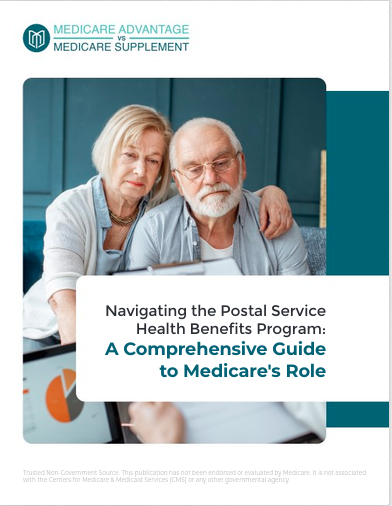Key Takeaways
- Medicare Advantage plans bundle services and may offer additional benefits, but they come with specific network restrictions and rules.
- Original Medicare provides broad access to healthcare providers, with separate costs for hospital and medical services, offering more flexibility but less coverage.
Understanding the Basics
Medicare, the federal health insurance program for those aged 65 and older or individuals with specific disabilities, has two primary options: Medicare Advantage and Original Medicare. These choices significantly differ in terms of coverage, costs, and flexibility. Choosing the right one means understanding how each works and which aligns with your healthcare needs.
What is Original Medicare?
Original Medicare is the foundation of Medicare and includes two main parts:
Part A: Hospital Insurance
Part A covers inpatient hospital stays, skilled nursing facility care, hospice, and some home healthcare. Most people don’t pay a monthly premium for Part A if they’ve worked and paid Medicare taxes for at least 10 years. However, there is a deductible per benefit period, and you’ll need to pay coinsurance if your hospital stay exceeds a certain number of days.
Part B: Medical Insurance
Part B covers outpatient care, doctor visits, preventive services, and medical supplies. Unlike Part A, Part B requires a monthly premium and an annual deductible. After meeting the deductible, you generally pay 20% of the Medicare-approved amount for covered services.
Key Features of Original Medicare
- Flexibility: You can see any doctor or healthcare provider nationwide who accepts Medicare.
- Separate Coverage for Drugs: Prescription drug coverage isn’t included. You’ll need to enroll in a standalone Part D plan if you want medication coverage.
- No Annual Cap: Original Medicare doesn’t have a limit on your out-of-pocket expenses. Supplemental insurance, like Medigap, can help cover these costs.
What is Medicare Advantage?
Medicare Advantage, or Part C, is an alternative to Original Medicare. These plans are offered by private companies approved by Medicare. They bundle Part A, Part B, and often Part D (prescription drug coverage), along with additional benefits like dental, vision, and hearing services.
The Core of Medicare Advantage Plans
- Network-Based Care: Most Medicare Advantage plans use networks of healthcare providers, such as HMOs or PPOs, which means you might need to use specific doctors and facilities.
- All-in-One Coverage: These plans often include prescription drug coverage and additional services Original Medicare doesn’t offer.
- Cost Structure: You’ll pay a monthly premium (in addition to your Part B premium), copayments, and deductibles. Some plans may have lower out-of-pocket costs compared to Original Medicare, but this varies.
Comparing Flexibility
Original Medicare
Original Medicare shines when it comes to flexibility. You’re not restricted to a network and can see any healthcare provider that accepts Medicare across the country. This is particularly advantageous if you travel frequently or want unrestricted access to specialists without needing a referral.
Medicare Advantage
With Medicare Advantage, you’ll need to adhere to the plan’s network. HMO plans typically require you to stay within the network, while PPO plans offer some out-of-network options but at a higher cost. Some plans may also require referrals to see specialists.
Prescription Drug Coverage: A Critical Distinction
Original Medicare
If you stick with Original Medicare, you’ll need to purchase a standalone Part D plan for prescription drug coverage. Each Part D plan has its own list of covered drugs, premiums, and deductibles.
Medicare Advantage
Most Medicare Advantage plans include prescription drug coverage. Having one plan for all services simplifies management but may also limit your options if a specific medication isn’t covered.
Additional Benefits: What Sets Medicare Advantage Apart
Medicare Advantage plans often provide benefits that go beyond what Original Medicare offers, such as:
- Dental, Vision, and Hearing Services: These are common in Medicare Advantage plans but not covered under Original Medicare.
- Wellness Programs: Some plans offer memberships to fitness programs or other health-focused perks.
Keep in mind that the availability of these additional benefits varies depending on the plan and the region.
Out-of-Pocket Costs: A Major Deciding Factor
Original Medicare
Original Medicare doesn’t have an out-of-pocket maximum, meaning there’s no cap on what you could spend in a year. However, combining Original Medicare with a Medigap plan can help manage these costs by covering deductibles, coinsurance, and copayments.
Medicare Advantage
Medicare Advantage plans do have a maximum out-of-pocket limit, providing a safeguard against catastrophic expenses. Once you reach this limit, the plan covers 100% of your costs for covered services for the remainder of the year.
Enrollment and Switching Considerations
You can enroll in Original Medicare when you first become eligible, during your Initial Enrollment Period (IEP), which is the seven months surrounding your 65th birthday.
Switching to or from Medicare Advantage is possible during specific periods:
- Annual Enrollment Period (AEP): From October 15 to December 7 each year.
- Medicare Advantage Open Enrollment Period (MA OEP): From January 1 to March 31, for those already in a Medicare Advantage plan.
During these periods, you can assess your current coverage and make changes if necessary.
How Your Healthcare Priorities Influence Your Choice
Choose Original Medicare if You:
- Want the freedom to see any doctor or specialist nationwide.
- Prefer to add supplemental coverage for more predictable costs.
- Don’t need additional benefits like dental or vision care.
Choose Medicare Advantage if You:
- Value all-in-one coverage with additional benefits.
- Are comfortable with a network of providers.
- Want a plan that includes prescription drug coverage and potential wellness perks.
Special Enrollment Periods: Life Happens
Certain life events trigger Special Enrollment Periods (SEPs), allowing you to make changes outside the usual enrollment windows. These events might include moving to a new area, losing other health coverage, or qualifying for Medicaid.
Coverage for Travelers: What to Keep in Mind
Original Medicare
If you’re a frequent traveler, Original Medicare offers peace of mind. It’s accepted nationwide, making it ideal for those who split their time between states or enjoy cross-country trips.
Medicare Advantage
Coverage under Medicare Advantage plans is usually more localized, which could pose challenges if you’re traveling or living part-time outside your plan’s service area. Emergency care is generally covered, but routine care might not be.
Deciding Between the Two
Deciding between Medicare Advantage and Original Medicare depends on your personal healthcare needs, financial situation, and lifestyle. Here are a few questions to consider:
- How often do you visit doctors or specialists? If you need frequent care, a plan with lower out-of-pocket costs might be better.
- Do you take prescription medications? Look for a plan with robust drug coverage.
- What is your budget? Consider premiums, deductibles, copayments, and any maximum out-of-pocket limits.
- How much flexibility do you need? Think about whether you want unrestricted provider access or can work within a network.
Which Option Fits Your Future?
Your healthcare needs and preferences will likely evolve. Staying informed and reviewing your coverage annually ensures your Medicare choice continues to align with your needs. With the right plan, you’ll have confidence in your coverage as you enjoy retirement and beyond.










